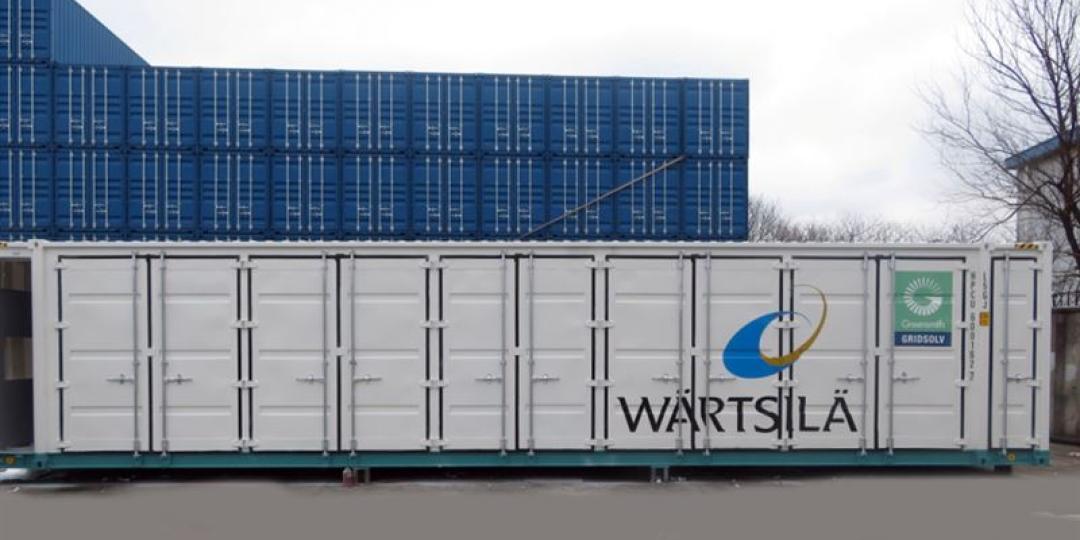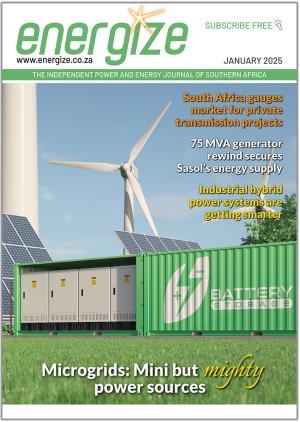by Michael Ball and Gabriele Buccini, Wärtsilä
South Africa has ambitious plans to expand its renewable energy generating capacity. Capacity additions envisioned under the Integrated Resource Plan (IRP) 2019, combined with the growth of embedded generation, could see over 20 000 MW of wind and solar PV capacity added to the grid by 2030 (IRP 2019).
Wind and solar PV could therefore make up over 33% of the country’s installed capacity and over 24% of total electricity generation by the end of the decade. These capacity additions would support in overcoming the current power crisis, while lowering electricity generation costs and reducing greenhouse gas emissions.
The roll out of wind and solar PV projects will undoubtedly deliver significant benefits to the country’s power sector and broader economy. The intermittent nature of these technologies does, however, pose unique challenges for the system operator in maintaining a secure and stable power grid.
Eskom currently relies heavily on its coal power plant fleet to stabilise the grid. Most of these power plants were commissioned before the 1980s and utilise ageing equipment prone to tripping and unplanned maintenance.
These plants also lack the required operational flexibility to effectively balance the high degree of variability of wind and solar PV generation. Requesting them to do so would only further decrease the reliability and lifespan of these coal plants.
To ensure that the national grid remains stable in the face of growing renewable intermittency, the IRP 2019 paves the way for the addition of over 2000 MW of energy storage and 3000 MW of flexible gas-fired capacity by 2030.

Progress has already been made in implementing these plans. In July 2020, Eskom issued a procurement notice for an energy storage project of 80 MW/320 MWh. This project forms part of a larger Eskom energy storage roll-out programme of 360 MW/1440 MWh.
In August 2020, the Department of Mineral Resources and Energy released the 2000 MW Risk Mitigation IPP procurement programme to support in alleviating the country’s power crisis. Given the stringent dispatchability and flexibility requirements of the programme, many developers have shown strong interest in deploying energy storage alongside traditional thermal and renewable technologies. Under this programme, energy storage was shown to enable developers to maximise the use of low-cost renewable energy whilst ensuring dispatchability and flexibility regardless of changing wind and solar conditions.
More generally, the near instantaneous response to dispatch instructions makes energy storage ideally suited to manage renewable variability. Longer duration energy storage could also support in shifting excess renewable generation and provide load following capabilities.
The minimal space requirements and modular design of the technology allows for phased deployment across multiple strategic sites in a grid network. This supports in deferring expensive grid upgrades and addressing local grid issues such as voltage challenges.
Driven by research and development from the electric vehicle industry, battery technologies continue to improve. Prices have decreased dramatically over the past years and are expected to continue declining sharply, broadening the business case for power sector and industrial applications.
The industry continues to leverage learnings and experiences from the rapid global adoption of energy storage. Along with battery technology improvements, storage software integration and optimisation play a key role in validating battery performances and enabling new ways to fully exploit batteries potential in the most effective, reliable, and economical manner.
Given the capabilities of the technology, energy storage is well suited to supporting grids through continuous charging and discharging cycles. The technology would, however, need to be supported by flexible thermal capacity to support in inter-day and seasonal balancing. Gas engines are well suited to provide this additional flexibility.
In the context of ensuring a just energy transition, it is important to promote job creation and participation by local companies in energy storage projects. Whilst the capabilities of South African companies to participate in these projects is currently limited, several players are ramping up capabilities to be at the forefront of this energy transition.















